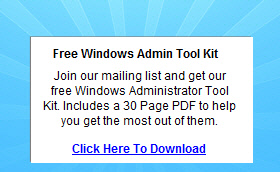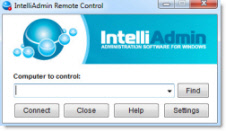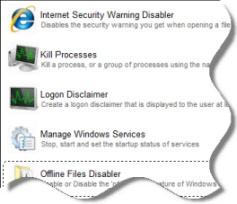NLB Testing Tool
Hi All
I have 2 servers that have been configured with NLB. NLB is configured and working as designed, but the Application Support Team is querying this and saying that it is not configured correctly.
What is happening is the application is sending requests to the NLB Name and it is not being split equally between the 2 nodes, I have confirmed that all settings are correct. I have asked them to confirm that there is application does not keep one
continuous connection to a server or does it make a new request everytime it sends the request and they cannt answer me.
I would want to prove to them that it is configured correctly, does anyone know of a tool that I can use to prove that NLB is working correctly?
Sulaiman
April 4th, 2011 9:47am
If they are testing from a single source the request is probably being sent to the same server repeatedly. Small client load usually means poor distribution.
Here is a snippet from NLB fundamentals:
Q. How Does the NLB Load Balancing Algorithm Work?
A. NLB employs a fully distributed filtering algorithm to map incoming clients to the cluster hosts. This algorithm enables cluster hosts to independently and quickly make a load balancing decision for each incoming packet. It is optimized
to deliver statistically even load balance for a large client population making numerous, relatively small requests, such as those typically made to Web servers. When the client population is small and/or the client connections produce widely varying loads
on the server, the load-balancing algorithm is less effective. However, the simplicity and speed of NLBs algorithm allows it to deliver very high performance, including both high throughput and low response time, in a wide range of useful client/server applications.
If No Affinity is set, NLB load balances incoming client requests so as to direct a selected percentage of new requests to each cluster host; the load percentage for each host is set in the NLB Properties dialog for each port range to be load balanced.
The algorithm does not dynamically respond to changes in the load on each cluster host (such as the CPU load or memory usage). However, the load distribution is modified when the cluster membership changes, and load percentages are renormalized accordingly.
When inspecting an arriving packet, all hosts simultaneously perform a mapping to quickly determine which host should handle the packet. The mapping uses a randomization function that calculates a host priority based on their IP address, port, and other
information. The corresponding host forwards the packet up the network stack to TCP/IP, and the other cluster hosts discard it. The mapping remains unchanged unless the membership of cluster hosts changes, ensuring that a given clients IP address and port
will always map to the same cluster host. However, the particular cluster host to which the clients IP address and port map cannot be predetermined since the randomization function takes into account the current and past clusters membership to minimize remappings.
In general, the quality of load balance is statistically determined by the number of clients making requests. This behavior is analogous to dice throws where the number of cluster hosts determines the number of sides of a die, and the number of client requests
corresponds to the number of throws. The load distribution improves with the number of client requests just as the fraction of throws of an N-sided die resulting in a given face approaches 1/N with an increasing number of throws. As a rule of thumb, with client
affinity set, there must be at least five times more clients than cluster hosts to begin to observe even load balance.
The Network Load Balancing client affinity settings are implemented by modifying the statistical mapping algorithms input data. When client affinity is selected in the NLB Properties dialog, the clients port information is not used as part of the mapping.
Hence, all requests from the same client always map to the same host within the cluster. Note that this constraint has no timeout value and persists until there is a change in cluster membership. When single affinity is selected, the mapping algorithm uses
the clients full IP address. However, when Class C affinity is selected, the algorithm uses only the Class C portion (upper 24 bits) of the clients IP address. This ensures that all clients within the same Class C address space map to the same cluster host.Matt W. CCNP, CCSP, CCDA, RHCT, MCSE, MCSA, MCP+I, A+
Free Windows Admin Tool Kit Click here and download it now
April 4th, 2011 12:26pm
Hi Sulaiman,
Thanks for posting here.
Could you discuss how did you configure NLB parameters (Cluster Operation Mode,
Host Parameters and Balancing Port Rule..etc.) in detail ?
Setting Network Load Balancing Parameters
http://technet.microsoft.com/en-us/library/cc731619.aspx
Meanwhile, you may also take look the troubleshooting mentions for this scenario in the link below:
Network Load Balancing is not load balancing applications, and the default host handles all the network traffic.
http://technet.microsoft.com/en-us/library/cc732592.aspx#BKMK_O
Thanks.
Tiger Li
TechNet Subscriber Support in forum
If you have any feedback on our support, please contact
tngfb@microsoft.comPlease remember to click Mark as Answer on the post that helps you, and to click Unmark as Answer if a marked post does not actually answer your question. This can be beneficial to other community members reading the thread.
April 4th, 2011 10:38pm
Hi Sulaiman,
You may also take look NLB.exe utility , with parameter "query" you can also check the state of current NLB cluster.
http://technet.microsoft.com/en-us/library/cc783990(WS.10).aspx
Thanks.
Tiger Li
TechNet Subscriber Support in forum
If you have any feedback on our support, please contact
tngfb@microsoft.comPlease remember to click Mark as Answer on the post that helps you, and to click Unmark as Answer if a marked post does not actually answer your question. This can be beneficial to other community members reading the thread.
Free Windows Admin Tool Kit Click here and download it now
April 5th, 2011 2:19am
Hi Sulaiman,
Please feel free to let us know if the information was helpful to you.
Thanks,
Tiger Li
TechNet Subscriber Support in forum
If you have any feedback on our support, please contact
tngfb@microsoft.comPlease remember to click Mark as Answer on the post that helps you, and to click Unmark as Answer if a marked post does not actually answer your question. This can be beneficial to other community members reading the thread.
April 7th, 2011 8:46am


